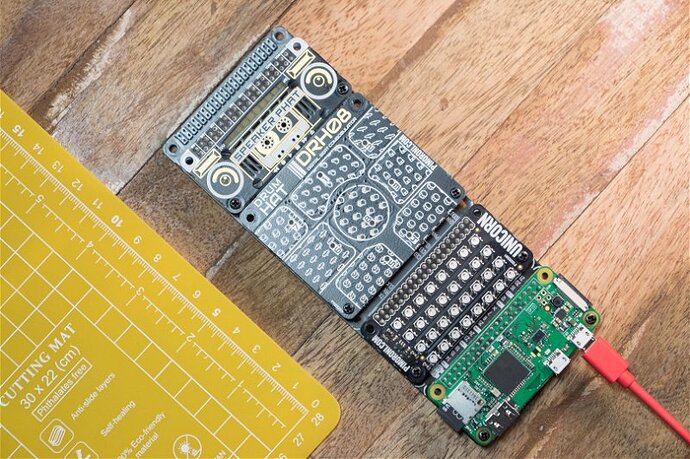Hi Pimoroni community:
I was lucky enough to grab a RPi Zero 2 W recently, and wanted among other things to work with some sensors - first attempt described here was a weight scale. I haven’t soldered anything since forever, so I got what seemed like a no-solder solution to my immediate needs while I practiced soldering on blanks. My parts list:
- Raspberry Pi Zero 2 W (no headers soldered on)
- Pimoroni pHAT Stack Fully Assembled
- SparkFun Qwiic Scale - NAU7802 (and a load cell to attach to it) https://www.sparkfun.com/products/15242
- SparkFun Qwiic pHAT v2.0 https://www.sparkfun.com/products/15945
- Flexible Qwiic Cable
So the “wiring diagram” such as it is, consists of
- RPI02W on the pHAT Stack
- Qwiic pHAT on the pHAT Stack
- Load cell wired to the NAU7802 which is Qwiic connected to the Qwiic pHAT
I’d successfully set up the pi (used the official RPi imager on Windows to burn latest OS to the microSD, a SanDisk 32GB), and had no trouble with the initial boot nor subsequently doing updates and installing some software that I expected to use. I successfully shutdown and powered back up several times. The green LED on the pi behaved as expected, lighting up and flashing when it was supposed to.
Whenever I handle any of the PCBs I wear a properly grounded wrist strap and only touch edges. I work on a silicone mat. With power off, I put the Zero2W (remember no header if that matters) and the Qwiic card (it has a female header) on the pHAT Stack. When I switched on power, the Zero2W green LED did not light up. I will note that the LED on the NAU7802 did light up, indicating it was getting its 3.3V power through the pins as expected; i.e., my power supply (official Raspberry Pi version by the way) did not die, and at least the 3.3V pins on the pHAT Stack are properly connected.
I read that at least for this particular Pi, one cause of an absent green LED is a bad SD card. Again, wrist strapped, powered down whenever I touched anything, I reseated the SD card. No. I re-imaged that SD card. No. I imaged another SD card, nope. No boot activity at all, no sign of life for the Pi.
All I can think is that I somehow fried the Pi. I was quite careful to try to avoid that. I never introduced external power to the system - power supply to the Pi was it - so nothing over 5V was ever present. I don’t see how I could have gotten even 5V where 3.3V were expected, or how I could have shorted anything.
I guess my questions are:
- did I do anything obviously (obvious to you, not to me) wrong that could have fried my pi?
- is it possible the pHAT Stack is defective and somehow fried my pi?
- is there any way the Qwiic pHAT could be defective in a way that would fry the pi (I can’t imagine it)
- how long will it be before I can get another RPi02W? I was feeling pretty lucky to have scored one.
I should maybe mention that I’m a retired theoretical physicist, thus the attempt to first do this project avoiding the soldering iron and even breadboards and jumper wires.
Thanks in advance for any advice, gentle scolding, or suggestions of what I might do to check the unlikely scenario that the board is not dead.
Cheers,
William


